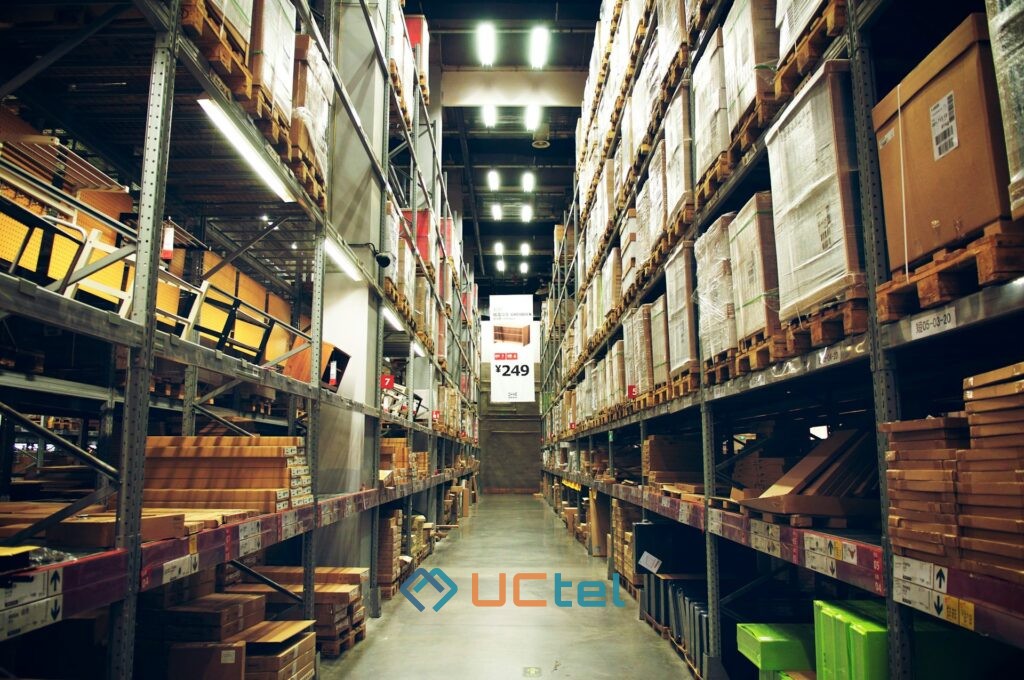Best Mobile Signal Booster Solutions for UK Warehouses: Tech, Costs & 5G‑Ready Strategies

Table of contents
- 1. Follow-Up Questions
- 2. Why Warehouses Struggle with Mobile Signal
- 3. Types of Boosters: DAS, Cel‑Fi, Cellular Repeaters—What Suits Your Warehouse?
- 4. Technical Comparison: Gain, Coverage, Carrier Support, Compliance
- 5. Cost & ROI: Calculating Productivity, Safety and Operational Returns
- 6. Planning Deployment: RF Surveys, Shelving, Antennas & Interference
- 7. 5G Futureproofing: Boosters, Bands and Upgrade Paths
- 8. Integrating with Warehouse Systems: Scanners, IoT, AGVs & Voice Comms
- 9. DIY Install vs Specialist Support: Timelines, Complexity and Compliance
- 10. Case Studies & Real‑World Examples: What Worked and Why
- 11. Frequently Asked Questions
- 12. Conclusion / TL;DR
Updated July 2025
Mobile signal boosters can transform warehouse connectivity by improving coverage, supporting multiple carriers, and enabling seamless operations. The best solutions combine compliance, technical performance, and futureproofing for 5G upgrades.
Follow-Up Questions
Why do warehouses often have poor mobile signal?
- Warehouses typically have metal structures, high racking, and dense layouts that block radio frequency signals. This leads to coverage gaps, dropped calls, and unreliable data connectivity.
What booster types are available for warehouses?
- Common options include Distributed Antenna Systems (DAS), Cel-Fi solutions (like QUATRA or GO), and simpler cellular repeaters. Each has different capabilities for coverage area, carrier support, and compliance.
How do the main booster technologies compare technically?
- DAS offers multi-operator support and broad coverage, while Cel-Fi QUATRA provides high gain and simpler installation. Compliance with Ofcom regulations varies by system type and output power.
How can boosting mobile signal improve ROI?
- Improved signal reduces worker downtime, speeds barcode scanning, and enhances safety communications. Over time, this results in measurable operational savings and productivity gains.
What should be considered during deployment planning?
- Key factors include:
- RF surveys
- Antenna placement
- Interference from metal racking
- Coordination with IT teams to avoid disruption
How can warehouses prepare for 5G?
- Choose booster systems that support current and upcoming 5G bands. This ensures network compatibility and avoids costly upgrades later.
Can boosters integrate with warehouse technologies?
- Yes. Enhanced coverage improves reliability for:
- Handheld scanners
- IoT sensors
- AGVs
- Voice communication systems
Should warehouses attempt DIY installation?
- DIY kits can suit small areas, but large warehouses typically require professional design, compliance documentation, and specialist installation to ensure effectiveness.
Are there examples of successful warehouse deployments?
- Yes. Case studies show that multi-operator Cel-Fi QUATRA and DAS installations have resolved signal issues in large distribution centres while complying with Ofcom standards.
Why Warehouses Struggle with Mobile Signal
Warehouse environments are notorious for poor mobile coverage. The core issue lies in construction materials: steel frames, reinforced concrete walls, and metal shelving absorb and reflect radio frequency signals. High racking can create shadow zones where signals simply do not penetrate. Large open spaces, while appearing unobstructed, also contribute to signal degradation due to multipath interference.
These factors combine to create unreliable voice calls, slow data connections, and frequent signal drops. For operations reliant on mobile connectivity—like barcode scanning, forklift communications, and safety alerts—this inconsistency can disrupt workflows and compromise worker safety. Understanding these challenges is the first step toward selecting an effective booster solution.
Types of Boosters: DAS, Cel‑Fi, Cellular Repeaters—What Suits Your Warehouse?
Warehouses have multiple booster options:
- Distributed Antenna Systems (DAS) distribute signals via a network of antennas connected to a base station or off-air donor signal. DAS is often chosen for large or complex sites requiring multi-operator coverage.
- Cel-Fi Systems, including QUATRA and GO models, are advanced repeaters that amplify signals with high gain and easy integration. They are legal in the UK when properly configured and licensed, offering simpler installation than DAS.
- Basic Cellular Repeaters are generally suitable only for smaller areas and single-carrier needs. However, they may not provide the compliance or performance needed in enterprise environments.
Selecting the right technology depends on warehouse size, structure, and the need for multi-operator support.
Technical Comparison: Gain, Coverage, Carrier Support, Compliance
A side-by-side comparison highlights key differences:
- DAS can support all UK networks simultaneously and scale to cover hundreds of thousands of square feet. However, it requires detailed design, higher capital investment, and rigorous compliance documentation.
- Cel-Fi QUATRA offers up to 100 dB gain—far exceeding passive repeaters—and simpler installation using Category cable infrastructure. It can serve multi-operator requirements with modular design and is Ofcom-compliant when deployed by licensed providers like UCTel.
- Basic Repeaters, while lower cost, typically have limited gain (around 70 dB) and smaller coverage footprints. They may also risk non-compliance if installed without proper configuration or licensing.
Cost & ROI: Calculating Productivity, Safety and Operational Returns
While initial investment can range from £5,000–£50,000 depending on scale, mobile signal boosters deliver measurable returns. Studies show that poor connectivity can cause scanning delays of 5–10 seconds per transaction, adding up to hundreds of lost hours annually.
Improved coverage enhances worker productivity, reduces order errors, and supports faster turnaround. In emergency scenarios, reliable signal is critical for safety communications. Over time, these benefits often exceed installation costs, delivering ROI within 12–24 months.
Planning Deployment: RF Surveys, Shelving, Antennas & Interference
Effective deployment starts with a professional RF survey. Technicians assess signal sources, measure indoor coverage, and identify interference from metal structures. Antenna placement is critical—ceilings often host omnidirectional antennas for broad coverage, while directional antennas target problem areas.
During installation, careful cable routing avoids conflicts with warehouse systems and preserves fire safety compliance. Coordination with IT and facilities teams ensures minimal disruption. UCTel’s phased approach typically completes installation in 3–5 days, including testing and sign-off.
5G Futureproofing: Boosters, Bands and Upgrade Paths
5G is rapidly becoming essential in industrial environments. Modern boosters like Cel-Fi QUATRA 4000 support key 5G NR bands (n78 and n77) used by UK networks. Choosing a 5G-ready system avoids obsolescence and allows upgrades via software and module replacement.
Warehouses should confirm with suppliers that booster solutions can integrate new frequency bands as they become available. This ensures smooth migration and continued Ofcom compliance.
Integrating with Warehouse Systems: Scanners, IoT, AGVs & Voice Comms
Mobile signal boosters do more than improve calls. They enhance the reliability of:
- WMS-connected barcode scanners
- IoT environmental sensors
- AGVs (Automated Guided Vehicles)
- Voice communication devices
Consistent connectivity underpins real-time tracking, inventory updates, and safe operation of machinery. Planning should include assessing device requirements and confirming that boosted coverage reaches all operational zones.
DIY Install vs Specialist Support: Timelines, Complexity and Compliance
While small warehouses can sometimes use DIY kits, larger deployments typically require professional support. Factors like multi-operator coverage, 5G readiness, and Ofcom licensing add complexity.
Specialist installation includes detailed surveys, system design, compliance documentation, and validation testing. This approach ensures the system performs as intended and meets all regulatory obligations. UCTel provides end-to-end services, minimising risk and accelerating deployment.
Case Studies & Real‑World Examples: What Worked and Why
- A UK logistics firm operating a 200,000 sq ft warehouse faced persistent signal loss affecting barcode scanning and staff communications. UCTel deployed a Cel-Fi QUATRA system with distributed antennas, delivering full multi-operator coverage within five days.
- Another case involved a pharmaceutical distributor requiring 5G readiness and integration with IoT sensors. A hybrid DAS and Cel-Fi solution was implemented, achieving compliance and futureproof connectivity.
These examples demonstrate the importance of tailored design and professional installation.
If your warehouse operations suffer from unreliable mobile coverage, consider a professional assessment to identify the most effective and compliant booster solution. UCTel offers free audits and design consultations to help you plan a reliable, futureproof system.
Frequently Asked Questions
Why do warehouses typically have poor mobile signal coverage?
- Warehouses often use steel structures, metal shelving, and have high ceilings, which block or reflect radio frequency signals. This causes dead zones and unreliable mobile connectivity.
What types of mobile signal boosters are available for warehouses?
- Common solutions include:
- Distributed Antenna Systems (DAS)
- Cel-Fi QUATRA systems
- Basic cellular repeaters
DAS supports large multi-operator coverage, Cel-Fi offers high gain with simpler installs, and basic repeaters suit smaller areas.
How do DAS and Cel-Fi QUATRA compare technically?
- DAS provides broad coverage with multiple operators but requires complex installation and higher costs.
- Cel-Fi QUATRA offers very high gain (up to 100 dB), modular deployment, and is easier to install while maintaining compliance.
What are typical installation costs and ROI expectations?
- Costs range from £5,000 to £50,000 depending on scale and complexity.
- ROI usually occurs within 12–24 months, driven by:
- Improved worker productivity
- Faster scanning
- Enhanced safety communications
How should I plan the deployment of a booster system in a warehouse?
- Start with a professional RF survey to assess coverage and interference.
- Design antenna placement carefully
- Coordinate with IT and facility teams
- Phase installation to minimise disruption
Are these solutions compatible with 5G and future technologies?
- Yes. Cel-Fi QUATRA 4000 supports key 5G frequency bands and allows software or module upgrades, futureproofing the system for evolving networks.
Can boosters improve connectivity for warehouse devices?
- Yes. They enhance reliability for:
- Barcode scanners
- IoT sensors
- Automated Guided Vehicles (AGVs)
- Voice communication devices
Is DIY installation recommended?
- DIY kits may work for small areas but professional design, licensing, and installation are strongly advised for larger or multi-operator environments to ensure compliance and optimal performance.
Do I need to coordinate with mobile operators during installation?
- Yes, especially for DAS and higher-power systems. Coordination and licensing help avoid interference and ensure regulatory compliance.
Conclusion / TL;DR
- Warehouses face unique signal challenges due to metal structures and high racking
- DAS and Cel-Fi QUATRA are leading solutions for multi-operator, high-gain coverage
- Professional installation ensures Ofcom compliance
- Boosters improve productivity, safety, and warehouse system integration
- 5G-ready designs protect your investment and support future growth





